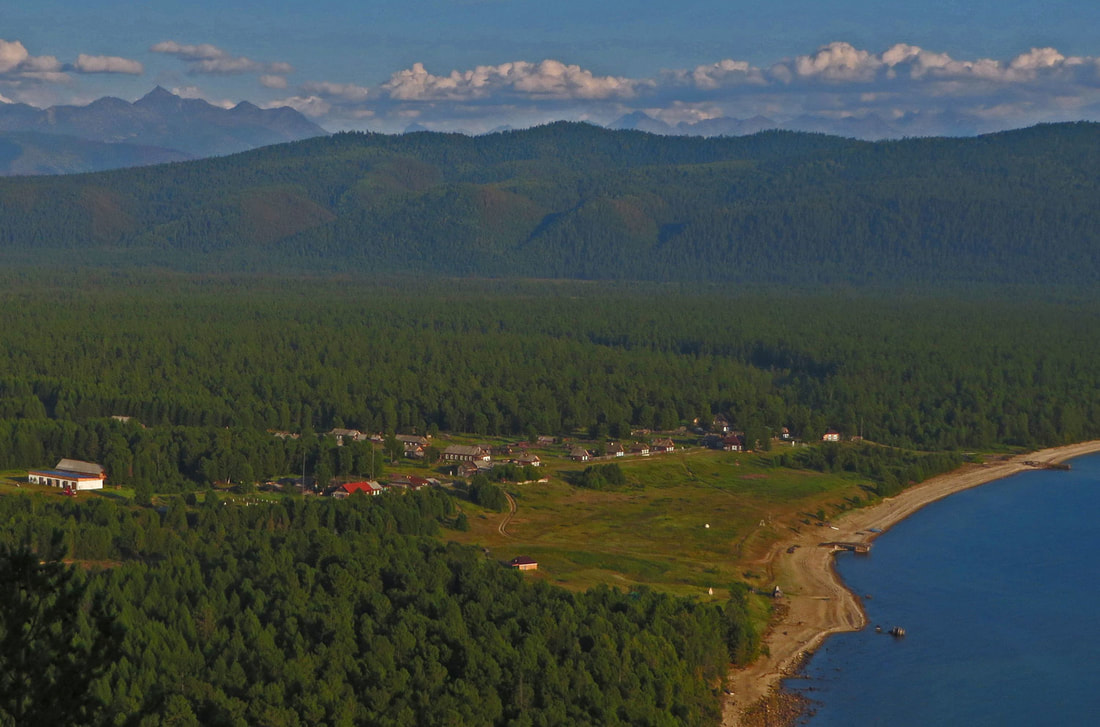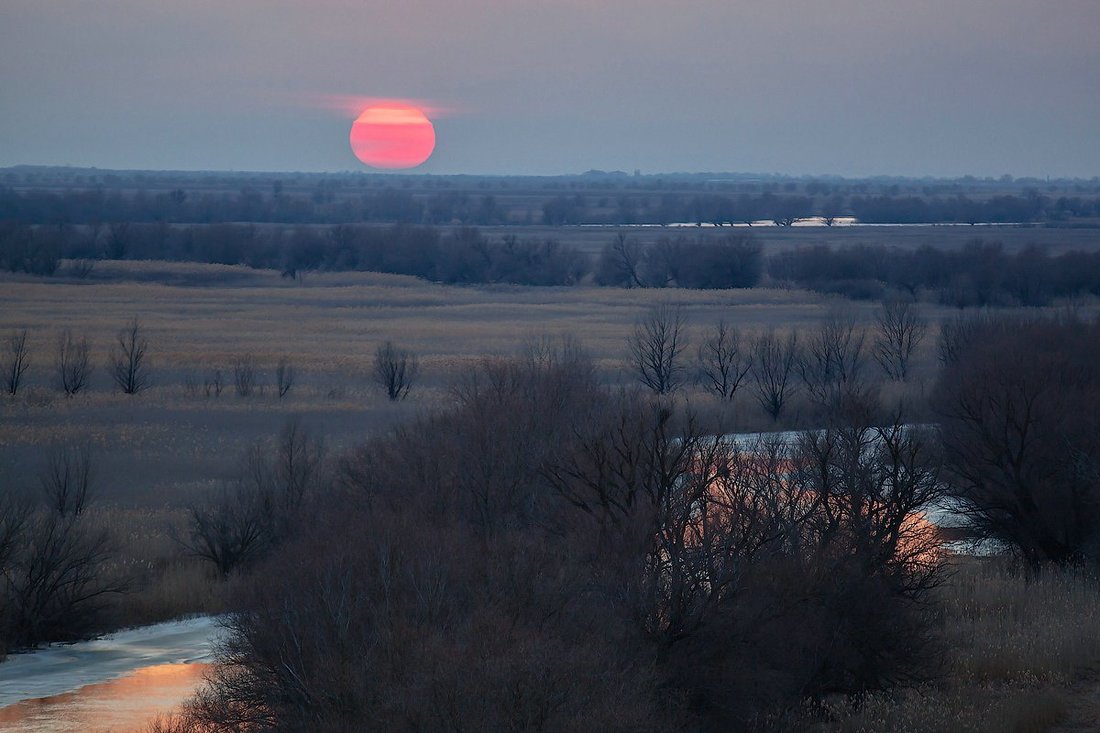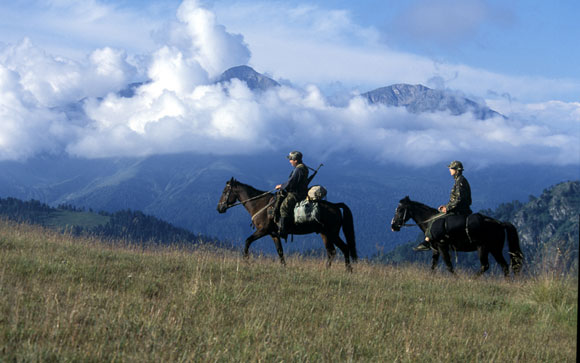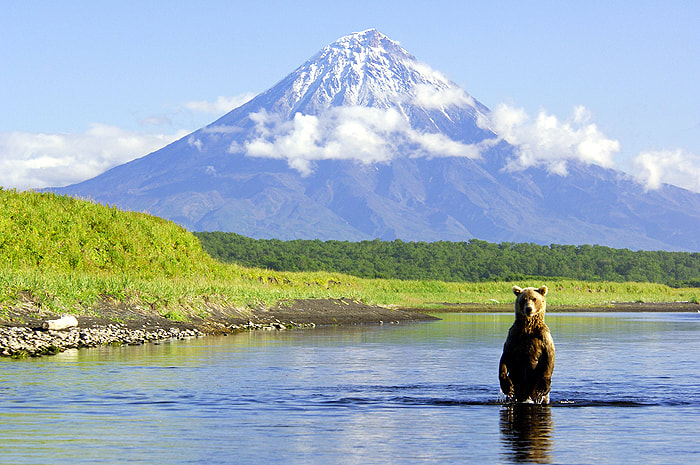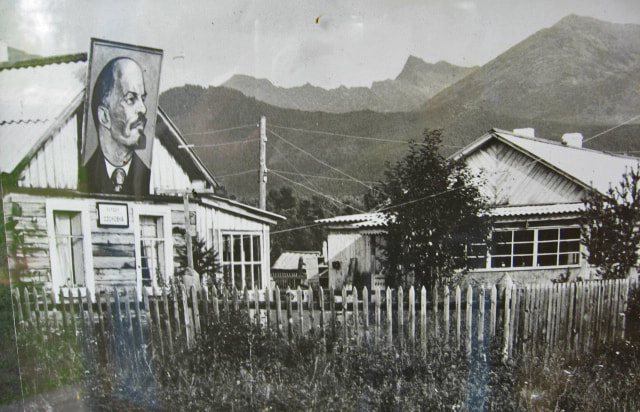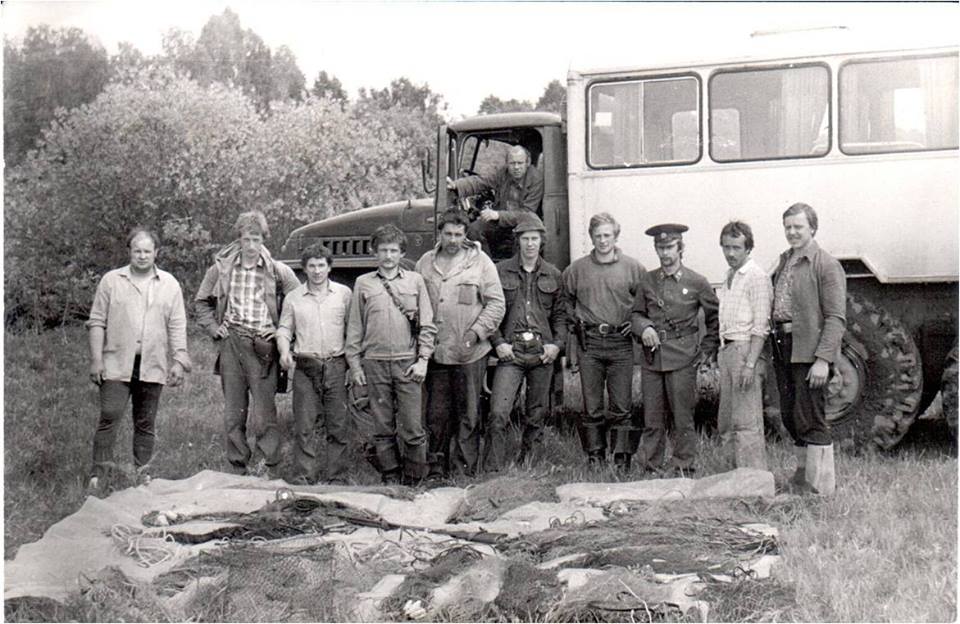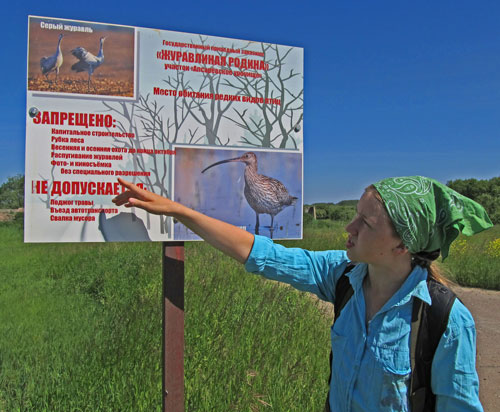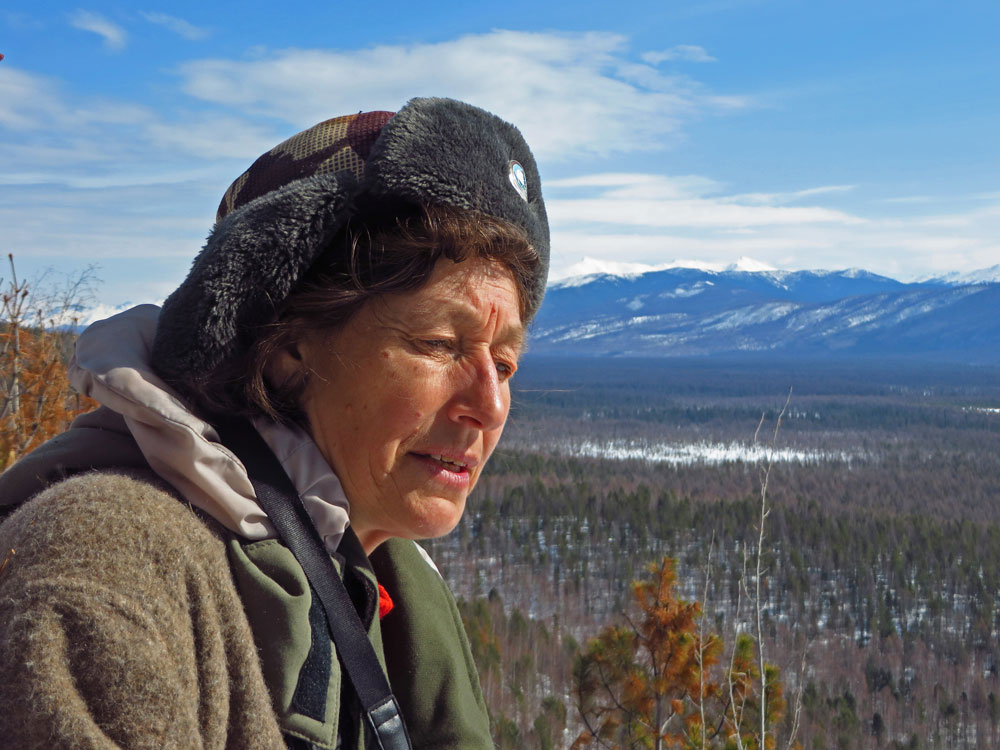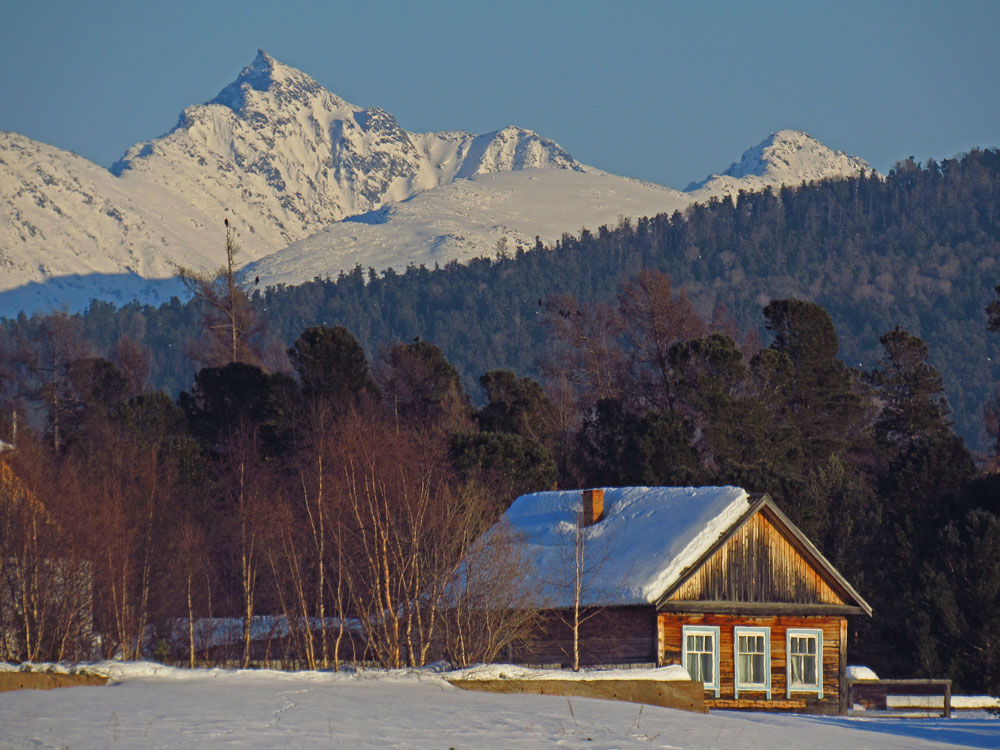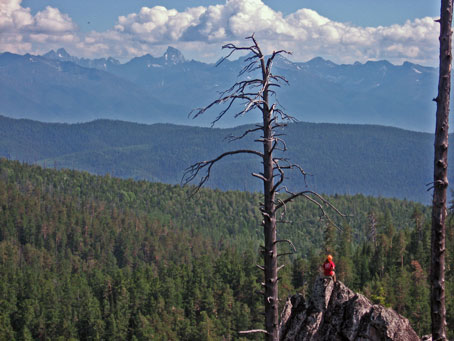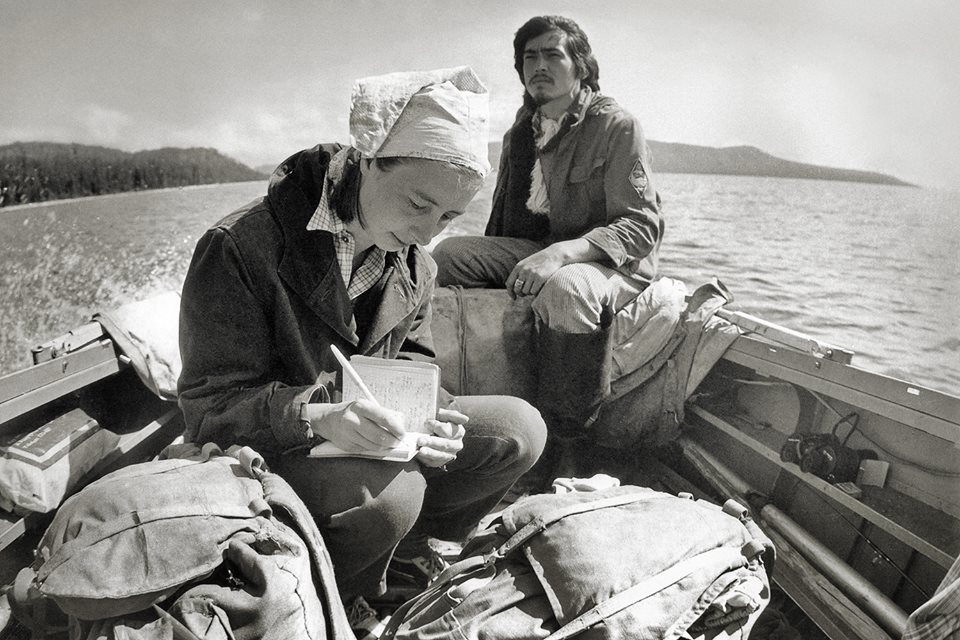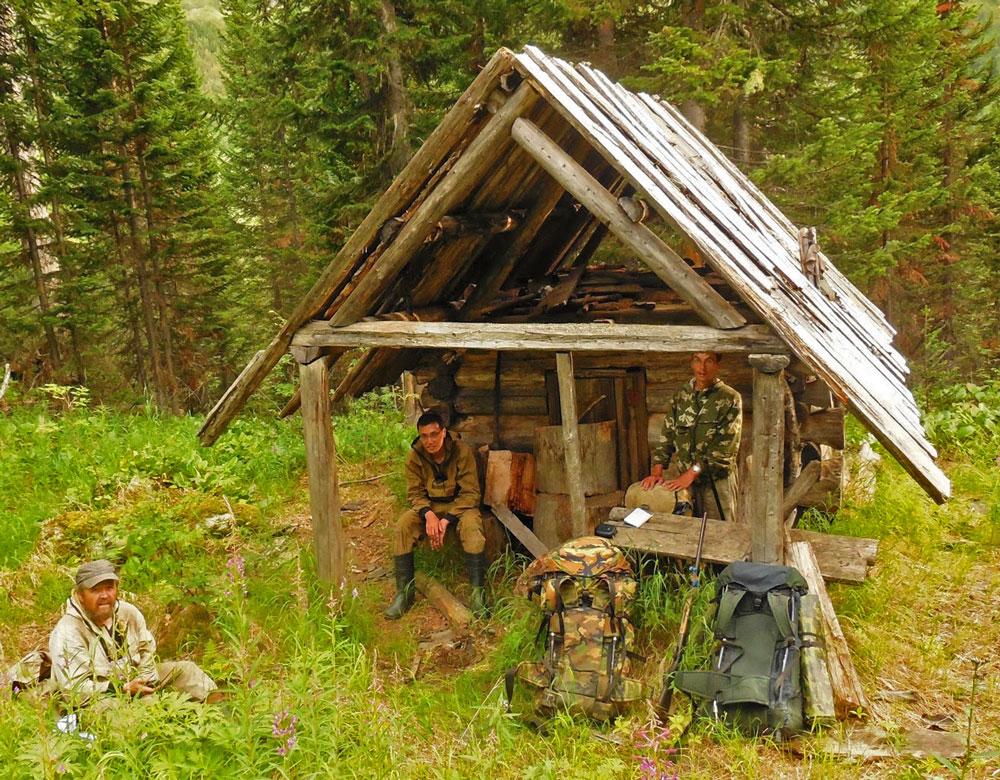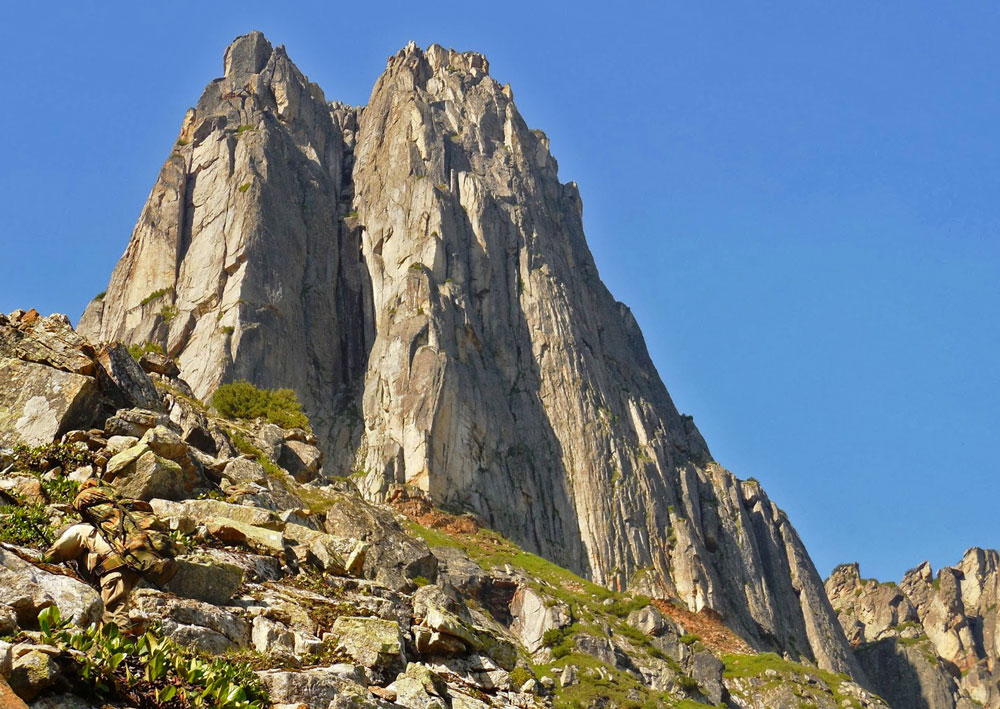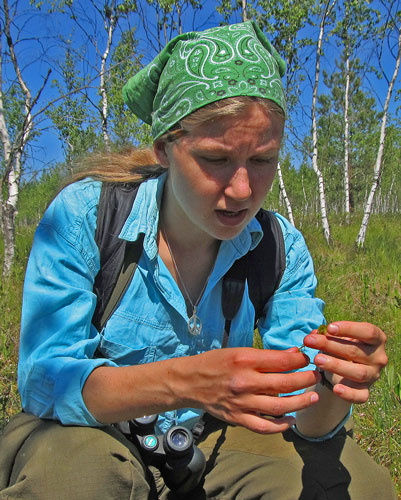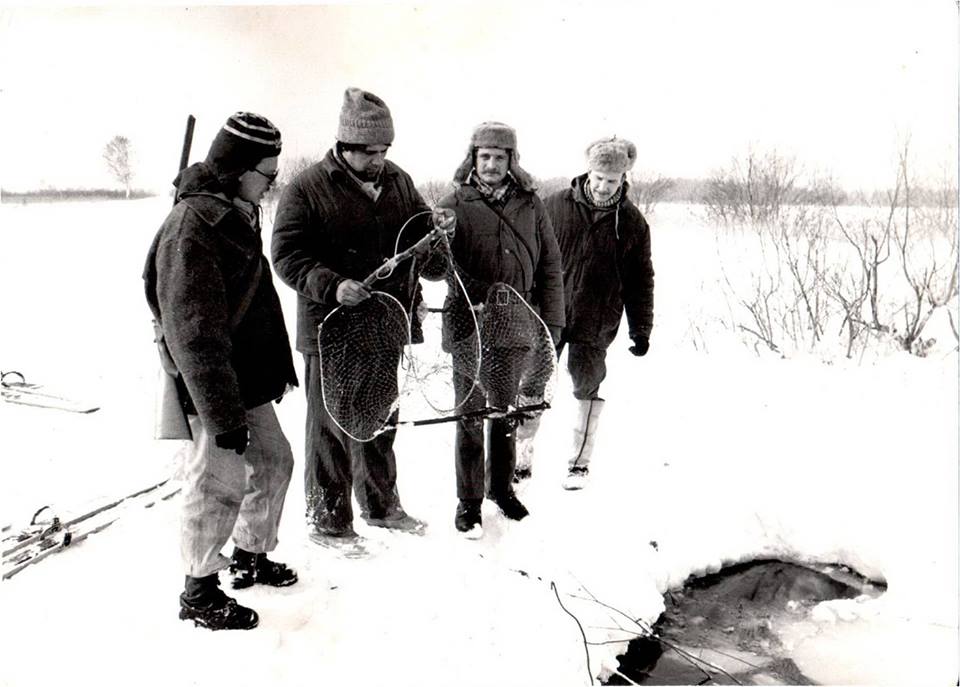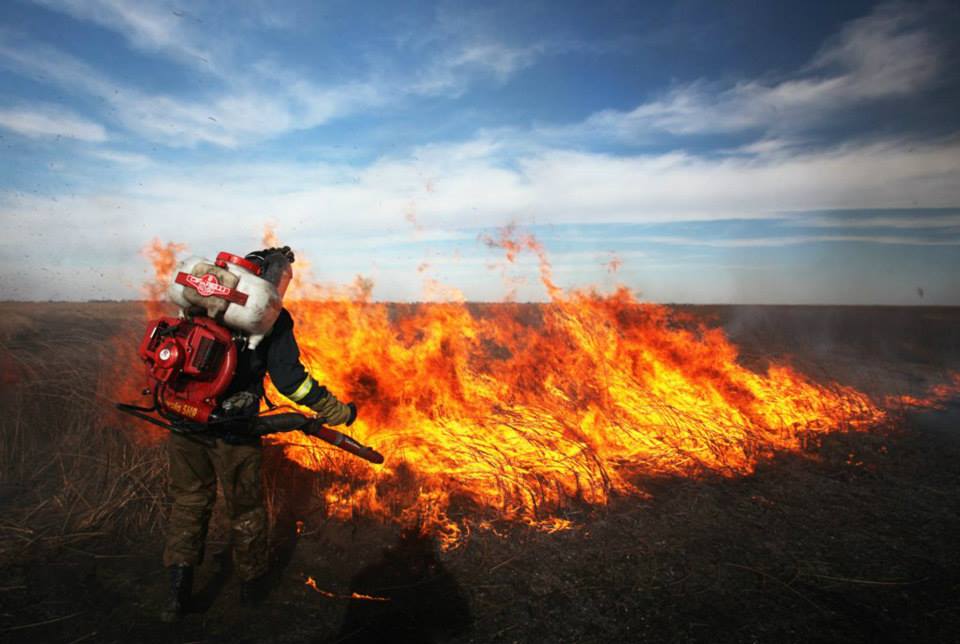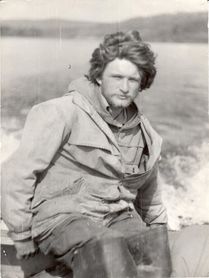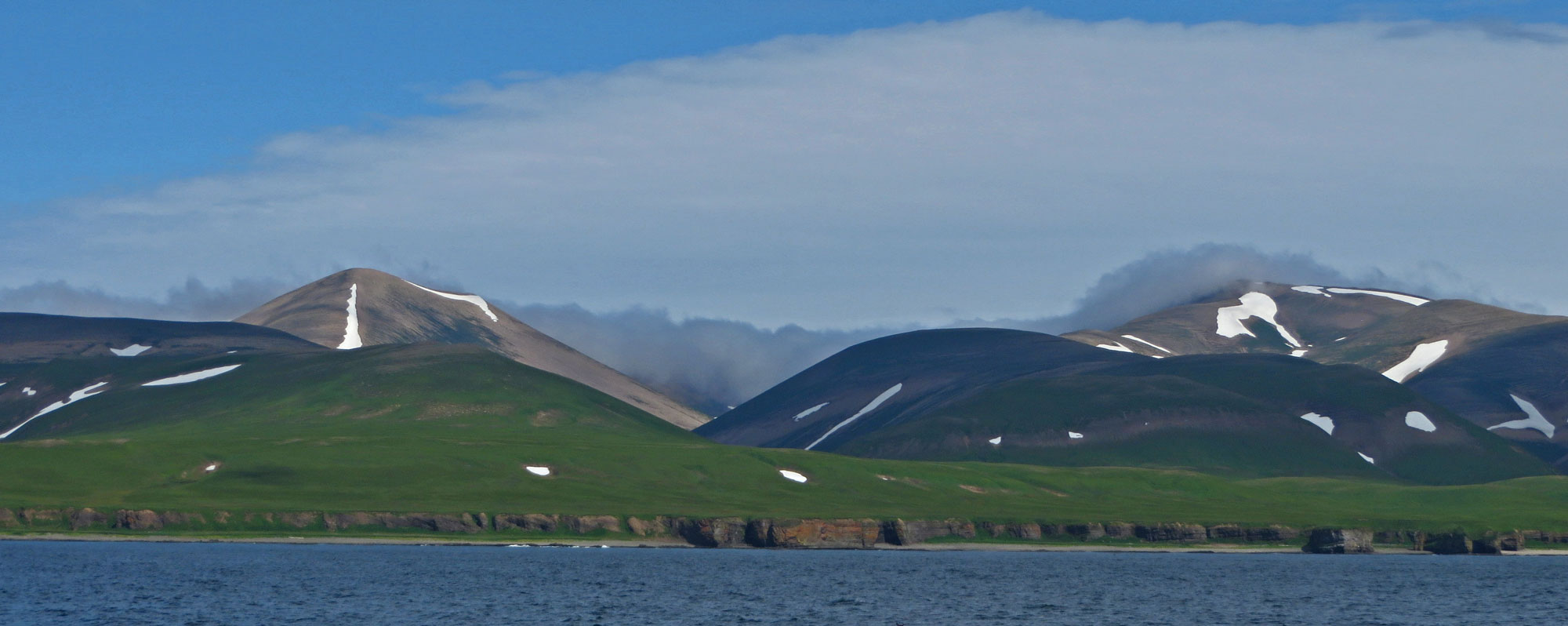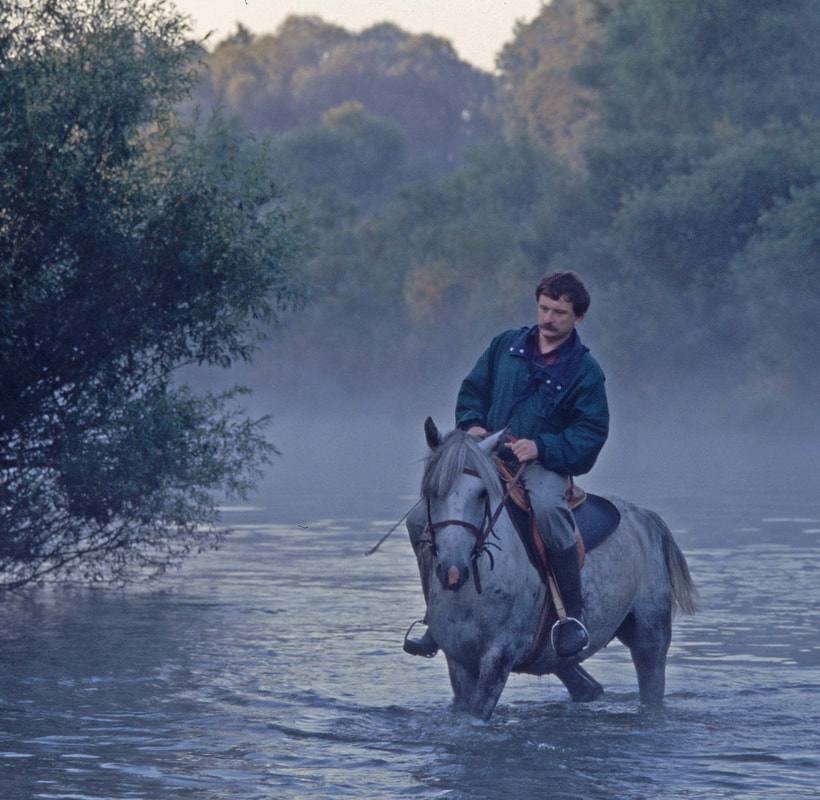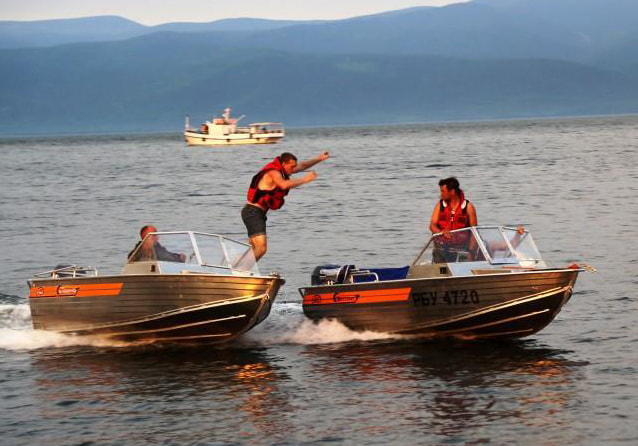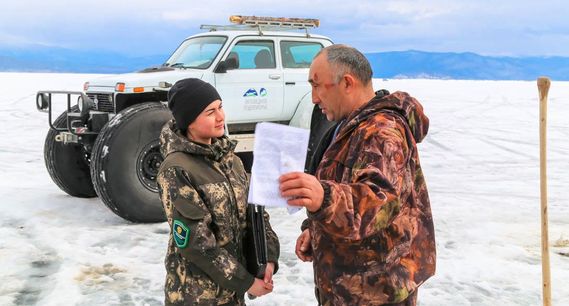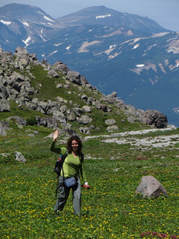Photo atop this page: View at sunset from Barguzinsky Zapovednik, across Lake Baikal, to mountains on far shore above Baikalo-Lensky Zapovednik (photo Strebeigh)
Russia's Nature Saviors
Russia’s huge nature reserves are an unlikely Soviet legacy — thanks to the environmental activists who fought to preserve them.
(Originally published without photographs as
"Lenin's Eco-Warriors," by Fred Strebeigh,
New York Times, 7 August 2017 <https://www.nytimes.com/2017/08/07/opinion/lenin-environment-siberia.html>.)
Photography on this site is courtesy Igor Moroldoev & Artur Murzahanov & Igor Podgorny & Sergey Shitikov
& Igor Shpilenok & Vsevolod Stepanitskiy & Fred Strebeigh (details at bottom of article).
Text by Fred Strebeigh.
Русская версия (Russian version)
|
Atop a granite cliff in Siberia this past winter, I stood gazing at what became, 100 years ago, the first in the world’s largest system of most protected nature reserves. To my west glistened mile-deep Lake Baikal. To the east rose snowy mountains, including one that reminded me of sharp-cut Half Dome, an icon of America’s Yosemite National Park. I was looking across Barguzinsky Zapovednik, a conservation area protecting more than 600,000 acres so free from human impact that visitors may not enter.
Barguzinsky began a chain of 103 zapovedniks, or nature reserves, that protect 68 million acres of Russia. Most zapovedniks date from the Soviet era and provide the world’s highest level of protection to the most land within any nation, under the International Union for Conservation of Nature’s designation of “strict nature reserves.” |
|
How did Russia — hardly considered a cradle of environmentalism, given Joseph Stalin’s crash program of industrialization — become a global pioneer in conservation?
Much of the answer begins with Vladimir Ilyich Lenin. In 1919, a young agronomist named Nikolai Podyapolski traveled north from the Volga River delta, where hunting had almost eliminated many species, to Moscow, where he met Lenin. Arriving at the Bolshevik leader’s office to seek approval for a new zapovednik, Podyapolski felt “worried,” he said, “as before an exam in high school.” But Lenin, a longtime enthusiast for hiking and camping, agreed that protecting nature had “urgent value.” Two years later, Lenin signed legislation ordering that “significant areas of nature” across the continent be protected. Within three decades, some 30 million acres (equal in area to about 40 states of Rhode Island) from the European peaks of the Caucasus to the Pacific volcanoes of Kamchatka were set aside in a system of 128 reserves. |
|
The roots of the zapovedniks were holy. Priests for years had sanctified forests by proclaiming a zapoved, or commandment: Thou shalt not cut. By the early 20th century, the sacred was resonating with the scientific: Mankind was exterminating “primordial nature,” a Moscow biology professor, Grigorii Kozhevnikov, told a conference in 1908. He argued that anthropogenic dominance would soon leave humanity unable to see nature except through man-made imitation, “obscuring the image of the vanished past.”
He proposed that Russia preserve vast lands where “nature must be left alone.” Each would serve not as a “pleasuring-ground” for people (the words of the law that created the first of America’s national parks, about which Russians were aware) but as a baseline established by observation of natural systems untrampled by people. |
|
Joseph Stalin, however, was not one for obeying anyone else’s commandment. In the 1940s, he initiated a “great transformation of nature” in the U.S.S.R. To open the country for a huge expansion of farming, logging, mining and hunting, he slashed the zapovednik system by 89 percent in 1951, leaving just 40 reserves comprising about 3.5 million acres.
After Stalin died in 1953, brave scientists fought back in defense of the reserves. By 1961, the system had rebounded to 93 zapovedniks on 15.7 million acres, with some additions and many restorations. |
|
Stalin’s successor, Nikita Khrushchev, was no friend of conservation, but the defenders were organizing. The reserves owe their survival, in part, to a 1960 law inviting the “participation of non-governmental organizations in the protection of nature.” Within days, a group of biology students at Moscow State University took up the challenge. They called their movement Druzhina, after the medieval warriors who defended their homeland against invaders seeking to destroy Russia’s Christian faith, and began to fight poachers and create nature reserves.
The students’ motto resounded with ironic romanticism: “For the success of a hopeless cause!” By the 1980s, about 140 brigades of Druzhina had sprung up across the country. As the years passed, Druzhina activists became leaders on university faculties, and in environmental organizations and Russia’s Ministry of Natural Resources. |
|
|
On my hike up the bluff that lies just outside the protected vastness of Barguzinsky Zapovednik, the researcher leading me was a Druzhina named Irina Kurkina. This reserve was Russia’s first, created in January 1917, before the Bolsheviks seized power (the Volga delta zapovednik proposed to Lenin by the young agronomist was the second to begin). Ms. Kurkina came here in 1986, fleeing a poultry farm to which the Soviet system had sent her to work, straight from college. She lives in this remote part of southern Russia far beyond the reach of any road.
“I would not do this job, be this kind of person,” she told me, if not for the inspiration of fellow students in the Moscow Druzhina, whose names she recited as we climbed. |
|
|
Their activism carried risks. To combat poaching, Druzhina teams gained legal authority to make citizens’ arrests. At least three Druzhina were shot dead by poachers in different regions — near the Black Sea, the Ural Mountains and Lake Baikal — between the early 1970s and mid-1980s.
When the threat wasn’t physical, it could be political. One leader of the anti-poaching teams, Vsevolod Stepanitskiy, told me some years ago about a time when he and his university colleagues, on patrol near Moscow, caught some illegal duck hunters. One, they learned, was a “deputy minister of finance.” Worried at how their report would be received, the students presented their evidence to the Communist Party. The minister got away with a reprimand, Stepanitskiy recalled. But the students went unpunished, and felt victorious. Druzhina became, in the words of another warrior who later joined the biology faculty at Moscow State, “a prototype of civil initiatives” and, as she put it, “a sign of democratization in conditions of totalitarianism.” |
|
In 2015, President Vladimir Putin, who famously enjoys photo opportunities in nature with tigers, bears and whales, announced that the centennial year for Russia’s zapodneviks, 2017, would be the “Year of Protected Areas.” His government pledged to increase Russia’s protected acreage by 18 percent over the next eight years.
But storm clouds have gathered. Ranger salaries, which Mr. Stepanitskiy has fought to raise, are only about $4,300 a year. New ski resorts, supported by wealthy corporations that Russian conservation groups believe have lobbied the government, seem likely to threaten Caucasus Zapovednik. While Mr. Stepanitskiy has encouraged educational tourism in small sections of the nature reserves, he has criticized ski construction as “not eco-tourism” and as likely to jeopardize a leopard reintroduction project that has had Mr. Putin’s backing. Russia’s first zapovednik in the Arctic, Wrangell Island, is threatened by a new military base. After polar bears had been fed illegally, a construction worker tossed toward a bear an explosive device that detonated in its mouth, a horror shown by Russian TV. Proposed legislation would authorize Russia’s president to strip protection from zapovedniks for any reason, including “to ensure the security of the state.” |
|
In April, Mr. Stepanitskiy resigned for a fourth time. Conservationists across Russia are following his now unbridled commentaries, including that the ministry views Russia’s nature reserves as “a resource that can be used for personal recreation and entertainment.” He has attacked the government for failing to uphold the system’s century-long “sacred idea.”
For now, at least, Lenin’s legacy is preserved and Russia remains the world leader, ahead of Brazil and Australia, in protecting the most land at the highest level. Russian naturalists continue to advance their not-yet-hopeless cause of keeping free a few vast landscapes on this planet where humans do not tread.
For now, at least, Lenin’s legacy is preserved and Russia remains the world leader, ahead of Brazil and Australia, in protecting the most land at the highest level. Russian naturalists continue to advance their not-yet-hopeless cause of keeping free a few vast landscapes on this planet where humans do not tread.
I wish to give thanks to all the esteemed photographers--and Russian nature saviors--who gave me permission to include their photos on this page:
Artur Murzahanov [Артур Мурзаханов] <http://artur-murzahan.livejournal.com/>
Igor Moroldoev [Игорь Моролдоев] <http://igormor.blogspot.ru/2016/08/blog-post_10.html>
Igor Podgorny [Игорь Подгорный] <http://igorpodgorny.livejournal.com/>
Igor Shpilenok [Игорь Шпиленок] <http://www.shpilenok.ru/> & <http://shpilenok.livejournal.com/>
Sergey Shitikov [Сергей Шитиков] <https://www.facebook.com/profile.php?id=100006362046531&sk=photos_albums&pnref=lhc>
Vsevolod Stepanitskiy [Всеволод Степаницкий] <http://v-stepanitskiy.livejournal.com/>
Artur Murzahanov [Артур Мурзаханов] <http://artur-murzahan.livejournal.com/>
Igor Moroldoev [Игорь Моролдоев] <http://igormor.blogspot.ru/2016/08/blog-post_10.html>
Igor Podgorny [Игорь Подгорный] <http://igorpodgorny.livejournal.com/>
Igor Shpilenok [Игорь Шпиленок] <http://www.shpilenok.ru/> & <http://shpilenok.livejournal.com/>
Sergey Shitikov [Сергей Шитиков] <https://www.facebook.com/profile.php?id=100006362046531&sk=photos_albums&pnref=lhc>
Vsevolod Stepanitskiy [Всеволод Степаницкий] <http://v-stepanitskiy.livejournal.com/>
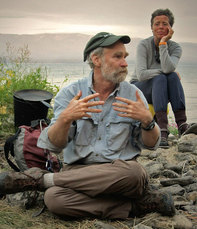
|
Author: Fred Strebeigh, senior lecturer at the Yale School of Forestry and Environmental Studies and the department of English. (At campfire, Big Ushkany Island, center Lake Baikal, working with team from Great Baikal Trail, 2014; photo Olga Mikhaleva.)
|
Translator: Elena Nikolaeva, Protected Areas Training Center, Environmental Education Centre "Zapovedniks"; doctoral candidate, University of Montana; past Vice Chair for North Eurasia, World Commission on Protected Areas of the International Union for Conservation of Nature. (On Dikiy Greben volcano, above Kuril Lake, South Kamchatka Sanctuary, working with research team from Kronotsky Zapovednik, 2012; photo Strebeigh.)
|
(Map above: location of Barguzinsky Zapovednik, shore of Lake Baikal.)
Русская версия (Russian version)
Russian nature, related articles
[Click here to return to top of page]
Русская версия (Russian version)
Russian nature, related articles
[Click here to return to top of page]
